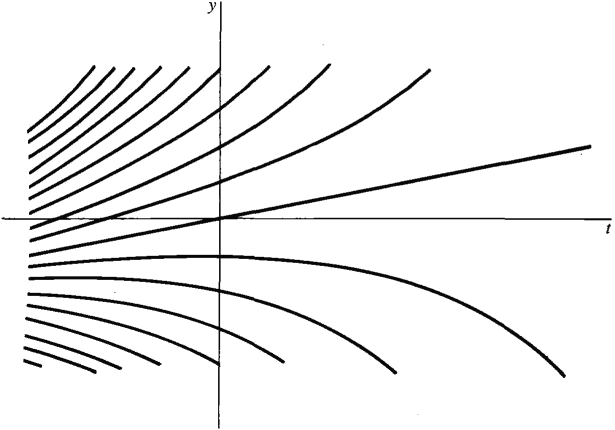| The ebook Elementary Calculus is based on material originally written by H.J. Keisler. For more information please read the copyright pages. |

|

Home  Differential Equations Differential Equations  Equations with Seperable Variables Equations with Seperable Variables  First Order Differential Equation First Order Differential Equation |
|






|
|
First Order Differential Equation
(1) For instance, if t is time and y is the position of a particle at time t, the differential equation (1) gives the velocity of the particle in terms of time and position. A differential equation gives information about an unknown function y(t). The general solution of a first order differential equation is the family of all functions y(t) that satisfy the equation. Each function in this family is called a particular solution of the differential equation. In most cases, the family of functions will depend in some way on a constant C, and the graphs of these functions will form a family of curves that fill up the (t, y) plane but do not touch each other, as in Figure 14.1.1.
Figure 14.1.1 Some examples of first order differential equations were solved in Section 8.6. For instance, it was shown that the general solution of the differential equation
is
There is one particular solution for each value of the constant C, and one additional particular solution y(t) = 0. The graph of this general solution is shown in Figure 14.1.2.
Figure 14.1.2 In most applications, a first order differential equation will describe a process that starts at some initial time t0. In order to determine a particular solution, we need both the differential equation and the value of y(t) at the initial time t0. A first order initial value problem is a pair of equations consisting of a first order differential equation and an initial value.
|
|
Home  Differential Equations Differential Equations  Equations with Seperable Variables Equations with Seperable Variables  First Order Differential Equation First Order Differential Equation |
|
Last Update: 2006-11-17






